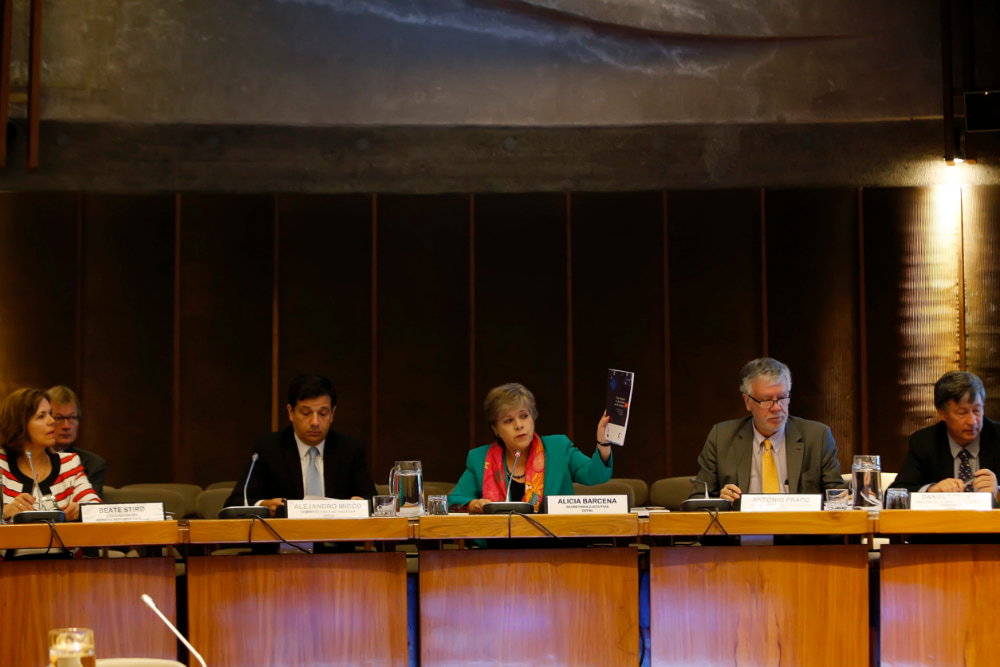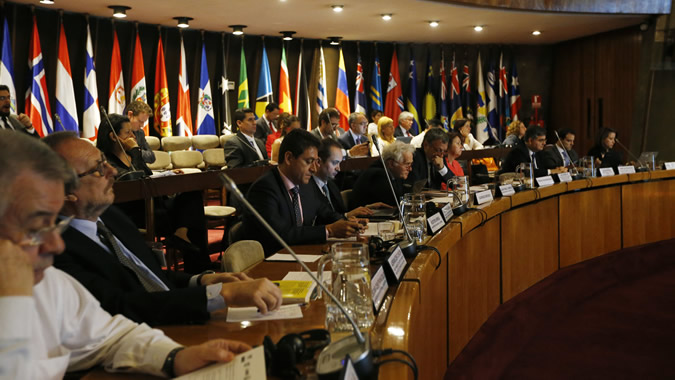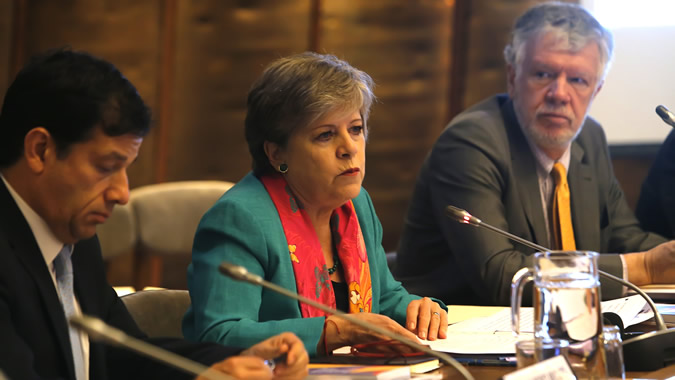Region’s Countries must Safeguard Public Investment to Bolster Growth, Innovation and Technological Change
Work area(s)
New report from ECLAC highlights significant divergences in fiscal dynamics between subregions of Latin America and the Caribbean.

Fiscal trends in Latin America and the Carribbean exhibit significant differences between the countries of the north and those of the south of the continent, reflecting disparate trends in their fiscal deficits, revenues and expenditures, according to a new report from ECLAC published today.
The United Nations regional organization has just released its annual report Fiscal Panorama of Latin America and the Caribbean 2017, which calls for careful stewardship of public spending and investment in the current economic context to bolster growth, innovation and technological change and to deal with climate change.
According to the document, during 2016 the average fiscal deficit of countries in Latin America remained stable at around -3.0% of the total gross domestic product (GDP) for the second consecutive year. There were, however, notable differences between subregions, with an improvement in the northern countries (from -2.4% of GDP in 2015 to -2.2% in 2016), while South America’s position worsened (from -3.6% of GDP in 2015 to -4.0% in 2016).
At the same time, trends in fiscal revenues and expenditures also exhibited significant differences between subregions. In 2016, total revenues in Latin America rose slightly as a proportion of GDP, reaching an average of 18.4% of GDP for the 17 countries covered, thanks to an increase in public revenue in Mexico (2.0 percentage points of GDP) and Central America, Haiti and the Dominican Republic (0.5 percentage points of GDP). In South America, meanwhile, there was a sizeable drop (0.5 percentage points of GDP), due to falling tax revenues.
As regards public spending, there are important differences in the evolution of capital expenditures across the region. There was a hike in such spending in Mexico (1.1 percentage points of GDP, partly due to the federal government’s recapitalization of PEMEX) and in Central America, Haiti and the Dominican Republic (0.2 percentage points of GDP), while in South America capital expenditure fell significantly (by 0.5 percentage points of GDP).
Meanwhile, the report indicates that gross public debt in the countries of Latin America as a whole continued to rise, to reach an average of 37.6% of GDP in 2016 (1.7 percentage points more than in 2015).
“Fiscal policy currently faces two types of challenges: those related to the current economic context, and those related to the medium and long terms. For the former, careful stewardship of social spending and public investment is needed, while for the latter, the imperative is to reduce tax evasion and avoidance —which remains high, accounting for an average of around 6.7% of GDP, some US$ 340 billion— to increase the overall tax take and to change the tax structure to place greater emphasis on direct taxes,” said Alicia Bárcena, Executive Secretary of the Economic Commission for Latin America and the Caribbean (ECLAC).
“For public spending to achieve increased efficiency and effectiveness it must be made to correlate more closely with the factors that affect the long-term productivity of the region’s economies,” the senior United Nations official added.
The conclusions of the Fiscal Panorama of Latin America and the Caribbean 2017 will be presented by the ECLAC Executive Secretary at the Twenty-ninth Regional Seminar on Fiscal Policy, which opens tomorrow, Thursday 23 March, at the Commission’s headquarters in Santiago, Chile. The event is to be attended by finance ministers and other officials from the region’s countries, and by authorities and international experts from a range of institutions including the International Monetary Fund (IMF), the OECD and the Inter-American Development Bank (IDB).
Related content

XXIX Seminario Regional de Política Fiscal
El XXIX Seminario Regional de Política Fiscal es organizado por la Secretaría Ejecutiva de la Comisión Económica para América Latina y el Caribe (CEPAL), a través de la División de Desarrollo…

ECLAC will Hold XXIX Regional Fiscal Policy Seminar
The traditional event will be held on March 23-24, 2017 in Santiago, Chile, and will be attended by finance ministers and undersecretaries and other authorities from countries in the region.

Authorities Call for the Maintenance of Fiscal Responsibility to Promote Growth and Equality
Officials attending an ECLAC seminar acknowledged that the current complex economic and political context requires greater efficiency and transparency in government spending.

Panorama Fiscal de América Latina y el Caribe 2017
Presentación de Alicia Bárcena, Secretaria Ejecutiva de la CEPAL.
Country(ies)
- Latin America and the Caribbean